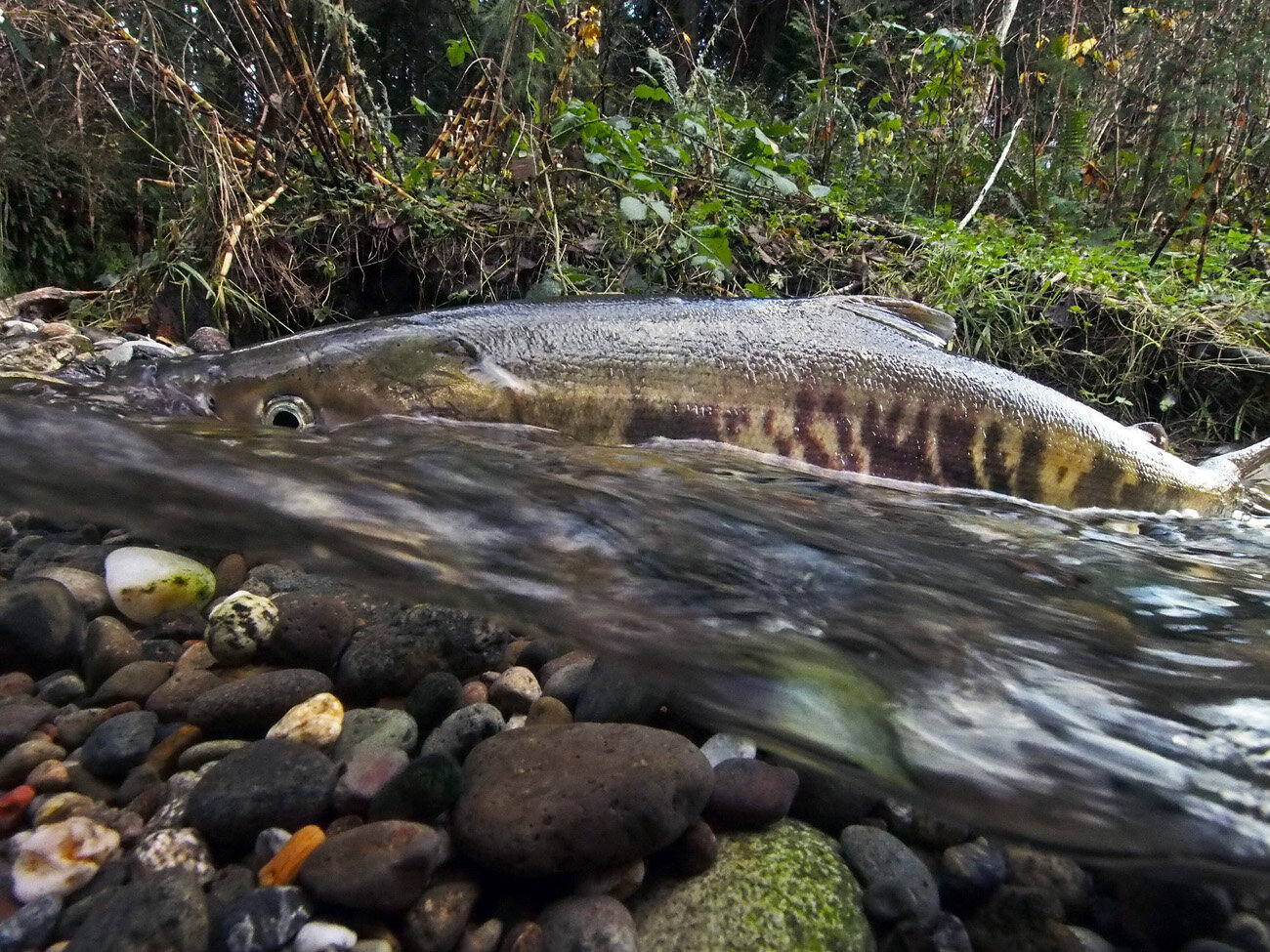An ex-stream workout
Every winter, trees come down on power lines and across roads and waterways, wreaking havoc and jamming up people’s lives. And last September, coastal wildfires added a large number of “hazard trees” that must be removed before property owners can begin to move forward with rebuilding.
But there is a group that has historically depended on downed trees, and they are our coastal salmon.
“Sixty years ago, crews used to take logs out of our waterways, thinking it was a fish passage barrier,” said Evan Hayduk, who has served as coordinator for the MidCoast Watersheds Council since 2016. “But these fish have evolved over thousands of years with wood in the streams.”
To help people affected by the fires and rebuild those natural systems that lead to healthy salmon populations, MidCoast Watersheds Council, Salmon Drift Creek Watershed Council and the Confederated Tribes of the Siletz Indians are partnering with PacificCorp on a solution. Power crews have been clearing un-millable and unsellable damaged trees and transporting them to storage sites near where they will be used this coming summer for habitat restoration projects in nearby streams and bays.
“People thought they were doing good by clearing wood out of streams, and we’re still struggling to this day to find enough large logs to repair the damage that caused to salmon habitat,” Hayduk said. “Logs help slow water flow, which settles out gravel and creates backwater eddies and side channels that young salmon can use to avoid getting washed downstream prematurely, before they can grow large enough to survive and thrive.”
USFS Hebo District Ranger Bill Conroy, a hydrologist by training, is keenly aware of the importance of these logs and worked quickly to find a place on forest service land for their temporary storage near planned restoration work sites.
“We often do log placements on our own properties,” he said. “The wood profoundly changes and improves the stream for salmon, lamprey, amphibians and other animals.”
It helps the physical nature of the stream as well, he explained.
“By collecting sediment, the wood also helps keep the stream from downcutting, allowing it to stay connected to surrounding wetlands and floodplains and helping downstream areas avoid flooding. So many people in our communities were impacted by fires. I’m glad we’re able to be part of one positive outcome from what was a challenging year.”
Seeds of recovery
Now that many of the victims of the Echo Mountain or Kimberling Mountain fires have cleaned and cleared their yards, a group of volunteers being coordinated by the Cascade Relief Team and the Salmon River Grange #516 in Otis want to help get them replanted with everything from grass and bulbs to trees and shrubs. Soil testing might be needed.
If you have plants or seeds that you can donate, are willing to volunteer, or are a fire survivor and need help replanting your yard, contact the Cascade Relief Team by Feb. 25. Go to www.cascaderelief.org/echomountain for more information.
MidCoast Watersheds Council completed a project on one local creek last year that is already yielding benefits:
“We removed some old fill, got the floodplain back to its natural level and loaded up the channel with some good wood,” Hayduk said. “This winter we have already seen immediate decreases in flooding and all those instant gratification things that you would want to see.”
Hayduk added a visual example of the overall effect logs can have fish on populations.
“The big logs create currents that scour out small stream beds to create pools where the water slows down and leaves collect,” he said. “Then all the bugs have a chance to dine on the decaying material, then the fish dine on the bugs; it’s a whole system dance that can’t happen without first having those big decaying logs.”
For now, with the fire’s bounty, there will be enough trees for near-term projects, but there is still room for more.
Logs used for restoration, if no root ball is attached, need to be two times the width of the stream as measured from bank to bank at a standard flow level. According to Hayduk, this means “for a stream that is 25 feet across we’d need a log 50 feet long.” Desired species include spruce, fir and cedar, since they last the longest in the creeks.
“We can help landowners by hauling trees away for free that fall or are cut down, but often when landowners contact us they’ve already cut the log up into shorter pieces which we can’t use unless they have a root ball on them.”
Funding for these projects comes from existing annual grants and others that Hayduk and other watershed group members work to find.
“We have a standing grant called our salvage log grant and we are applying for a fire-recovery grant to help some of the local landowners that have hazard trees that still need to be taken care of,” he said. “OWEB [the Oregon Watershed Enhancement Board] found an extra pot of money to reflect the added impacts of the fires that ripped through the state last year.”
This isn’t a free ride to clear trees from a property, Hayduk said.
“But if you have a tree come down give us a call, we can split the cost of taking care of it.”
For more information, go to www.midcoastwatersheds.org or call 541-265-9195.

